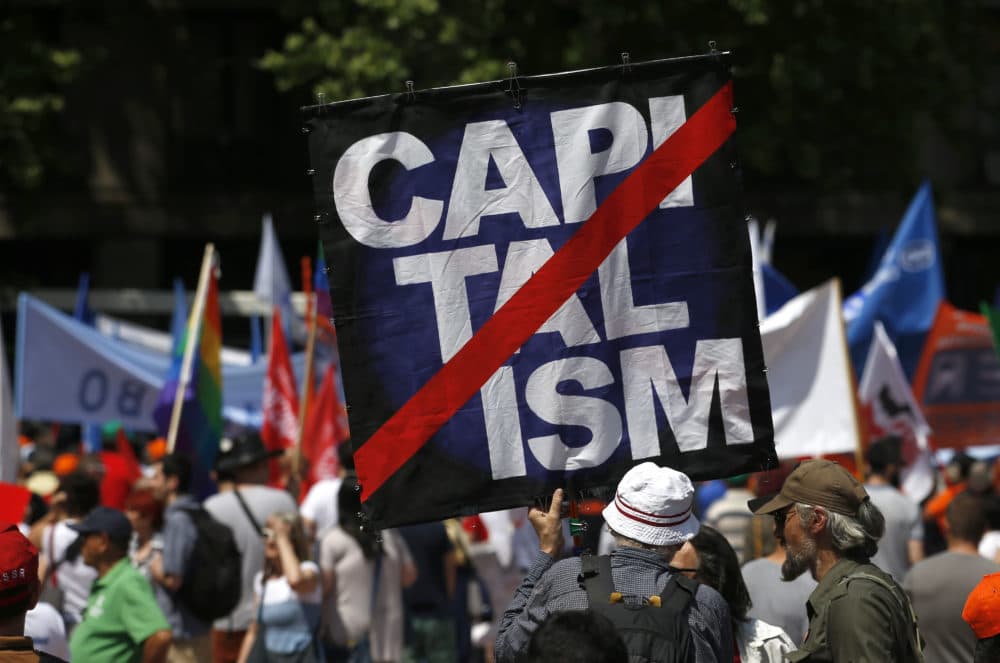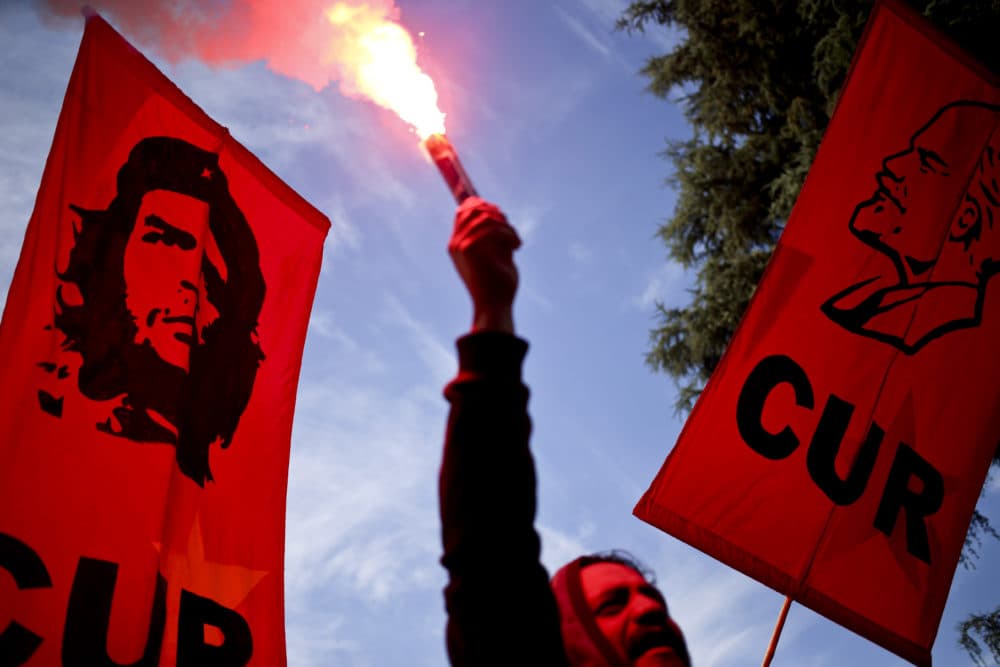Advertisement
commentary
What May Day Can Teach Us About Making Capitalism Work

Today, May Day, is International Worker’s Day, which commemorates the struggle of the worker. The holiday, though American in origin, is celebrated in 66 countries, including the United Kingdom, India and Iraq, but not here.
The event that inspired the holiday happened on May 4, 1886. A labor rally in Chicago’s Haymarket Square, supporting strikers calling for an 8-hour work day, erupted into chaos after a bomb was thrown toward police. The resulting pandemonium ended with four workers and seven policemen dead. Without tangible evidence, the state charged eight men affiliated with radical labor with the crime. All eight were convicted. Four were publicly hanged.
Though Americans must clock in today, it’s a particularly important year for us to revisit the Haymarket affair if we want to navigate the challenges facing our economic system.
It’s clear that capitalism currently is under scrutiny. Economic despair has prompted doubt that our economic system continues to serve the majority of Americans. Fewer than half of Americans ages 18 to 29 view capitalism positively. Socialism has growing appeal.
This is not the first time American capitalism and democracy have been in question.
In the years surrounding the Haymarket affair, the pulse of America would have felt similar. The country had quickly transitioned to an economy where more Americans worked for wages than were self-employed as farmers or tradesmen. The explosion of factory production created less satisfying work as production was sliced into “small repetitive tasks” executed by workers again and again. The average factory worker clocked in over 60 hours a week. And the risks were high. Each year, industrial accidents killed 35,000 workers and injured 500,000 more.

The government had not yet figured out what role to play in the evolving economic system. There was no minimum wage, no worker’s compensation and no workplace safety standards.
Labor’s strength grew in response to workers’ angst around social upheaval and dissatisfaction with their abysmal working conditions. Strikes were increasingly common. A radical anarchist faction emerged, calling for the destruction of capitalism. The division between labor and capital was deep and widening.
This crescendo set the stage for the violence of the Haymarket affair. The violence of the bomb thrown into the crowd. The violence of the state toward its citizens, wielding the might of a justice system run afoul.
The event served to further polarize the country. The capitalist establishment increased its anti-labor sentiment, viewing the convictions as an indication of labor’s radical bent. Though it took longer, labor also strengthened its organizing power, viewing the hanged men as martyrs for their cause.
Advertisement
This polarization stoked further violence. The 1892 Homestead strike resulted in an all-day battle in Homestead, Pa., between Carnegie Steel Co. guards and 10,000 strikers, 16 of whom died.
Over time the government navigated a balance between labor and capital and tensions dissipated. Numerous industry-specific safety laws were passed around the turn of the century that provided protections to railroad and mining workers, among others. In 1910, New York established workers’ compensation. Other states soon followed suit. In the 1930s, the Social Security Act created a social safety net for the retired and disabled and a federal minimum wage was established.

These varied and diffuse laws were the result of experimentation at the federal, state and local level. There were false starts and missteps. With time, the right balance was found. Collectively these interventions enabled rapid economic growth and social stability through the twentieth century.
Like post-Haymarket America, the country is in another moment of rapid change. The decline of manufacturing and the rise of technology is altering the nature of work, creating new winners and losers. Though blue-collar workers are less likely to be a part of a union or identify as “labor,” working class Americans are again getting the short stick. Skepticism of America’s capitalist system abounds.
The government has not yet figured out its role in tilting its evolving economic system toward justice and stability for all workers.
In response, unrest is growing. Yet this time around, discontent is not expressed through strikes or union rallies. Instead, it bubbles up in less predictable ways.
Charlottesville is still fresh in our minds. President Trump continues to offer not-so-subtle nods towards the potential violence of his supporters. Hate crimes and politically motivated violence are increasing. Instability will grow until the government again finds the right ways to intervene and address the needs of all Americans.
As we saw in turn-of-the-century America, changing the economic system takes many actors fumbling toward the right answer. Missteps and false starts are inevitable. Rebalancing the needs of capital and workers is no easy feat.
Conflict is typically an ingredient in societal change. But in conflict, people’s lives are always caught in the crosshairs. How much collateral damage will we accept?
The sooner Americans mobilize for change, the faster we can restore balance to the economic system. We should support lawmakers who advocate rethinking workforce retraining, reimagining benefits for gig economy workers and testing universal basic income. We should support them not because we know these policies are the right answers, but because history tells us that experimentation is how we fumble into the right answer.
On this uncelebrated May Day, let us each consider our role in ensuring capitalism can again serve the majority.
